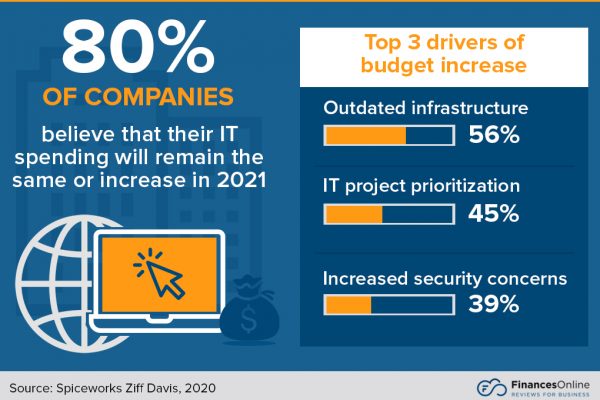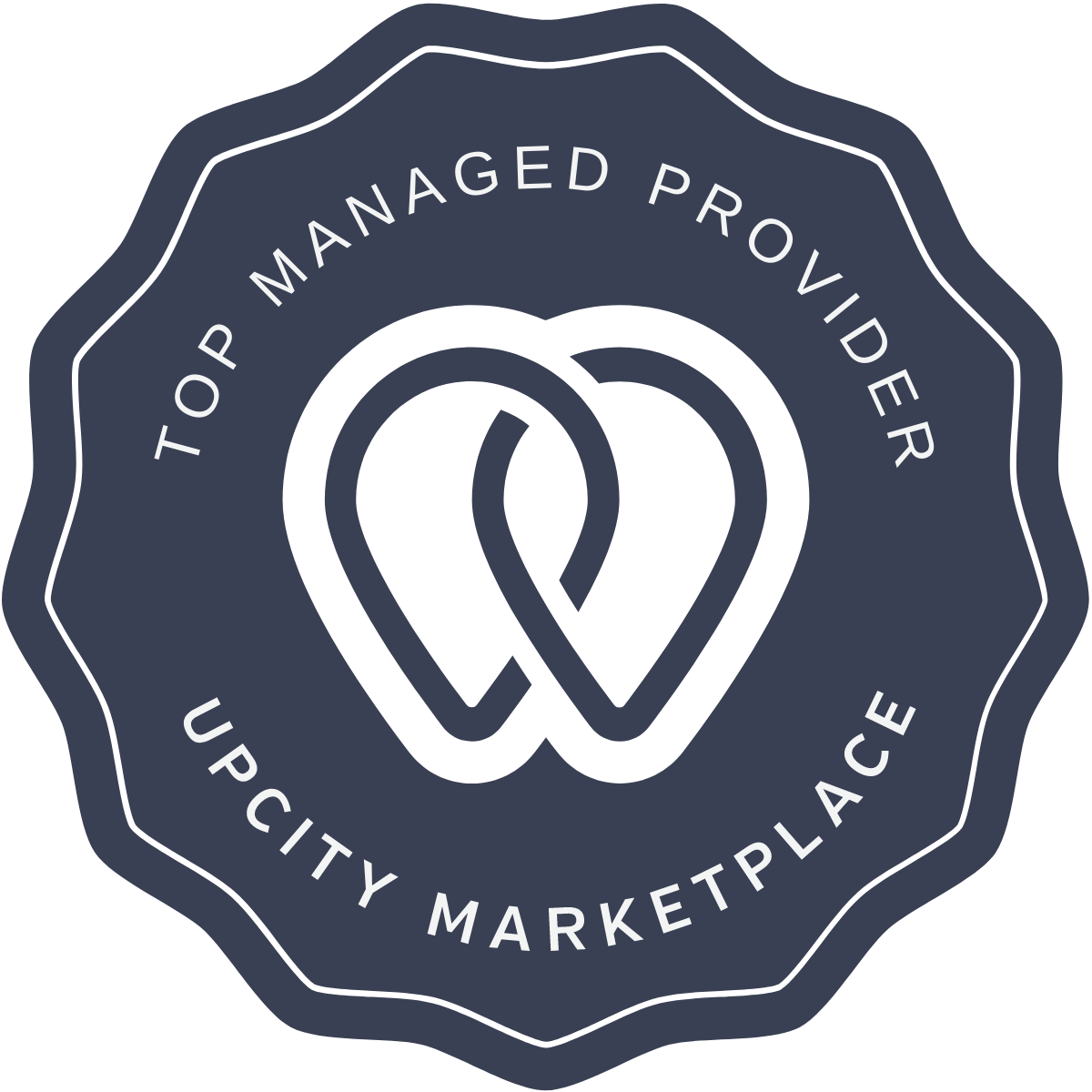ITSM, or information technology service management is all about streamlining operations and improving business efficiencies.
It starts with VCIO (virtual chief information officer) working with businesses to essentially help generate more revenue and take the load off of the IT concerns. So that they can focus on what they’re good at (business side).
In small businesses, it’s very common to see an “IT guy” or two handling most of the back-end operations. Instead of an actual department or an outsourced team.
And in most cases, they’re not in a full-time role or it’s one person juggling multiple roles.
Systems integrations, budgeting, security, customer satisfaction, and more.
Which isn’t very efficient.
Compared to having a VCIO that knows what they’re doing and is helping the business gain more time back – which can be anywhere from 5-20+ hours a week.
This is why having a strong IT service management dialed in is so important for businesses, whether they’re just getting started or they’re trying to scale.
And this is exactly what we’ll be covering below.
By the end of the article, you’ll have a much better idea of how to:
- Reap the benefits of a strong ITSM strategy for your overall, bigger-picture business goals and objectives
- Streamline your business operations with an “IT integrations and processes-first” approach
- Get the most out of ITSM without breaking the bank as a small business
- Establish trust and transparency with an IT service management provider to ensure a successful win-win partnership
So, let’s take a look.
First things first, what is ITSM (information technology service management), exactly?
An ITSM process refers to effectively managing and delivering IT services to meet the needs of an organization.
It encompasses various processes, policies, and tools designed to streamline IT operations, improve efficiencies, and ensure customer satisfaction.
To get the most out of ITSM, you’ll want to align IT services with the goals and overall objectives of your business. This is something we’ll explore in more detail.
But until then, what you need to know is that ITSM on its own covers a wide range of activities, including:
- Defining and documenting service standards.
- Establishing clear roles and responsibilities.
- Implementing best IT practices.
- Aligning IT needs with business needs.
- And more.
What are some of the biggest ITSM benefits?
By implementing ITSM principles in your business, you gain access to numerous benefits, such as:
- Better control and visibility over IT operations.
- Enhancing service quality in your business.
- Reducing downtime.
- Improving customer satisfaction.
- And overall, supporting business growth.
ITSM takes your business goals and objectives into consideration.
So, by implementing ITSM principles, organizations can experience these benefits and create a strong foundation for their overall business goals.
Streamlining Your IT Integrations And Operations: What You Need To Know
When you have just one person handling your IT environment, it’s very common to see stagnation in business.
So, before you start to streamline your operations, you need to make sure there are no challenges holding you back.
Now, while it’s true that no two businesses are alike, there are certain issues that we see consistently across different businesses and industries, such as:
- Outdated hardware or software.
- Unorganized processes and operations.
- Failing to meet compliance standards (e.g. HIPAA for healthcare, PCI, cybersecurity, etc.).
- Coordinating multiple departments and otherwise making sure you have the proper infrastructure to scale.
So, it’s very common to see a corporate IT environment become stagnant. Because, if there’s just one “IT guy” handling everything, things are bound to go wrong.
And it’s not just a “one-time solution” either. When managing your IT systems and integrations, there are many different things you need to consistently stay on top of. Such as:
- Latest, industry best practices.
- Surveilling and covering up vulnerabilities as they come up
- Making sure your passwords are secure and things don’t have root access to everything.
- And more.
What makes us and our process different is that we have a VCIO office that works with the end user directly.
This is our main point of contact for each partner to determine the perfect framework and game plan that’s going to be best for them specifically. And not just a “one-size-fits-all” solution.
Let’s take a look at why this is important.
Budgeting For Success: How To Maximize And Get The Most Out Of Your IT Resources
From our experience, when working as an IT-managed service provider, it’s extremely important to be directly involved with the process as a business owner.
Otherwise, two big things can wrong:
- The business isn’t involved in their IT service management. Then what can happen is the expectations are mismatched or the IT service provider works on their own, without involving the partner. Doing so, they can introduce a solution that’s not optimized for the specific partner.
- Or, the service provider could introduce a tailor-made IT solution, but the business might not be aware of how to implement it or not follow the game plan as promised.
The specific IT framework or plan also depends on the specific business:
- Requirements.
- Needs.
- Priorities.
- Business objectives.
- And more.
So, it’s not like the IT provider can come up with a solution on their own without involving the partner. Or, if they do so, chances are, it’s not going to be an ideal fit.
We focus on having the partner be directly involved at all stages and building out the relationship.
Our Partner Experience Teams (PET) are designed to be more intimate with our IT partners.
This way, you’re not forced to speak to 5 different people over 5 different days if you have an IT problem.
This keeps things simple and convenient for us as well as our IT partners.
And doing so, your IT also plays an important role with your other departments.
Maximizing IT resources by budgeting for success
By investing in IT, you’re also directly investing in other parts of your business.
This ties in directly with your day-to-day operations because you need the right infrastructure to operate, let alone scale.
So, this is based on your:
- Hardware, in terms of what’s outdated or not functioning properly (E.g. bad motherboard).
- What needs to be replaced, is covered by a warranty, or if a new model needs to be purchased.
- Necessary safeguards to ensure cybersecurity.
- Usage policies in terms of how non-employees can use or access company information and network resources.
To optimize for success for our partners, we use multiple toolsets which have multiple checklists and requirements that must be met from your team.
This is how we’re able to take companies from A to B in the most efficient way possible.
Because every business is different, it’s important we always get their input in terms of their requirements and needs.
Empowering Small Businesses IT Service Management Through Transparency And Trust
One of the recurring challenges small businesses face is the burden placed on employees with limited IT experience.
These individuals can then easily become overwhelmed and neglect their core responsibilities, leading to inefficiencies and compromised business operations.
To help with this, we work as MSPs (managed service providers) who can help alleviate this burden with a smart IT approach.
This is why approach managing IT services as “partners” and not “clients”.
We go through audits, analyze partner systems, and take the time to understand their operations. Then, we apply our checklists to create a thorough report based on real data.
As partners, we look at what they need and how we’re going to get there.
So, trust is also important here.
This is why we place so much emphasis on being involved with the whole process, from road mapping to execution.
And that’s what holds us accountable to our partners.
When we say we’re going to do a specific service, we always explain to our partners what’s going to happen or what the options are in terms of different scenarios.
It’s always good to know:
- What the different options and scenarios are.
- How long something is going to take.
- What it’s going to cost.
- And what are the pros and cons of each approach.
It all comes down to setting expectations and being transparent.
In an ideal world, this should be the bare minimum standard, and not “just” an MIS thing.
But we’ve met with many partners who were unhappy with their previous managed service providers.
So, it’s important to discuss the financial budgeting side of this.
Ensuring IT financial stability through stable budgets
- Bills for laptops.
- Organization-isused mobile (and other) devices.
- Servers.
- Routers.
- Software subscriptions.
- And more.
- Assuming the cheapest option is the best one.
- Hoping that last year’s budget will work for this year.
- Putting all the IT needs and responsibilities on one person (the “IT guy”).
- Thinking short-term.
- Your budget calendar.
- Prior budgets.
- Your business strategy and plans.
- Different types and technology categories within the budgets.
- And how to keep everyone on the same page in terms of communication and organization.

According to a study by Ailean Inc, US-based:
- Small and medium-sized businesses spend around 6.9% of their revenue on IT budgets.
- Midsize companies spend around 4.1% of their revenue.
- And larger companies spend around 3.2% of their revenue.
It’s likely because larger companies can benefit from economies of scale. Especially when it comes to licensing, packaging, and direct hardware discounts from re-sellers.
While the 2012 IT Operations Survey Report from Kaseya reported that 38% of their respondents increased their IT budgets in 2021.
According to FinancesOnline report, the top 3 drivers of budget increases are because of:
- Outdated infrastructure.
- Higher priority of IT projects.
- And heightened security concerns.


